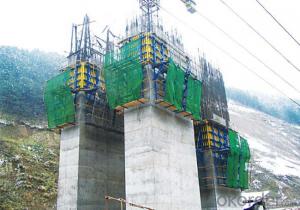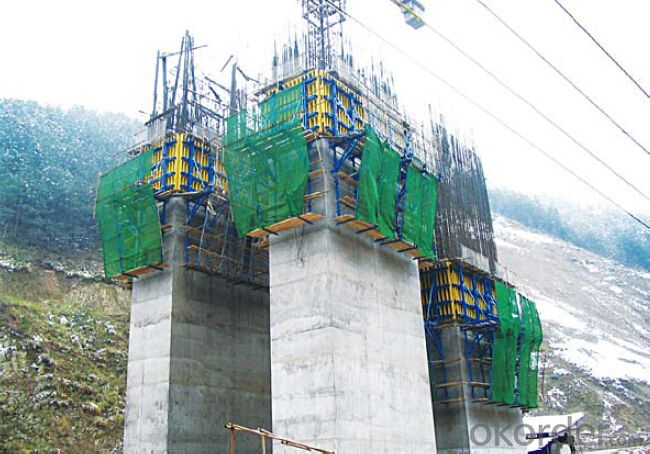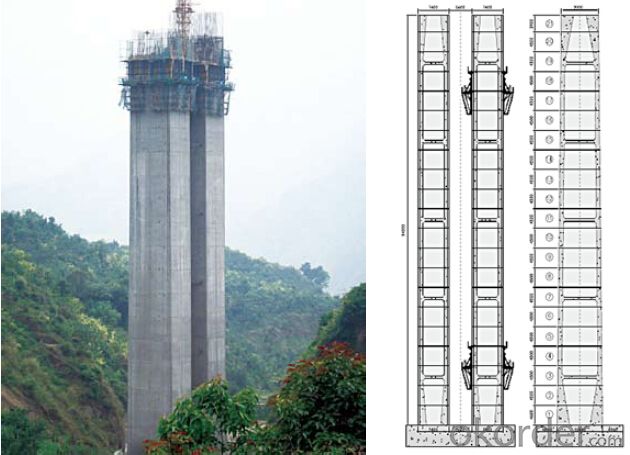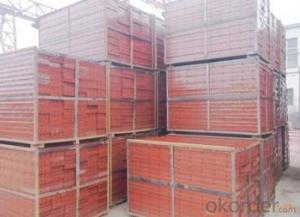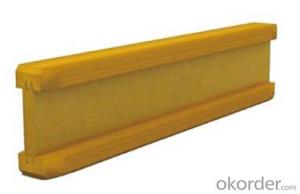Climbing-Bracket CB240 and CB210 for formwork and scaffolding systems
- Loading Port:
- Tianjin
- Payment Terms:
- TT OR LC
- Min Order Qty:
- 50 m²
- Supply Capability:
- 1000 m²/month
OKorder Service Pledge
OKorder Financial Service
You Might Also Like
Climbing Bracket CB240 & CB210
They are framework brackets for supporting large-area wall formwork.
Typical applications for the CB240&CB210 are pier and column/shear wall/core walll/ in the
building.
CB210 has smaller size than CB240, it will be cost effective in some condition.
Characteristics:
◆ High bearing capacity
The high loading capacity of the brackets allow very large scaffold units. This saves the number
anchor points required as well as reducing climbing times.
◆ Simple moving procedure by crane
Through the strong connection of formwork together with the climbing scaffold, both can be moved
as a single climbing unit by crane. Thus valuable time-savings can be achieved.
◆ Fast striking process without a crane
With the retrusive set, large formwork elements can also be retracted quickly and a minimum of
effort.
◆ Safe with work platform
The platforms have assembled firmly with bracket and will be climbing together, without scaffolding
but can work safely in spite of your high location.
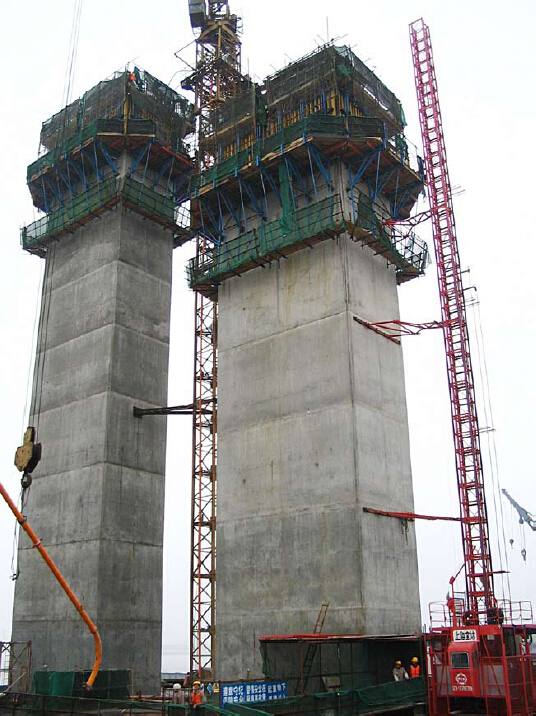
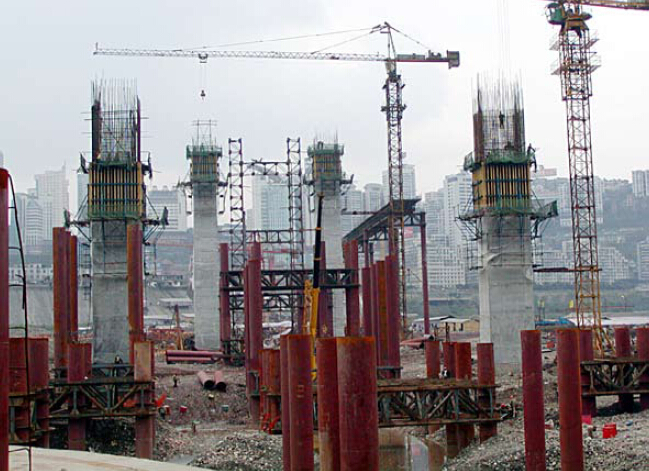
- Q: Can steel formwork be used for both small and large-scale construction projects?
- Indeed, steel formwork proves to be applicable for construction projects of both small and large scales. It presents numerous advantages, including durability, reusability, and flexibility. Its ability to endure immense pressure and loads renders it suitable for extensive projects necessitating substantial concrete pouring. Moreover, the modular nature of steel formwork permits effortless customization and adaptation to diverse project sizes and designs. This characteristic renders it equally fit for smaller construction projects that require a swift and effective formwork system. Additionally, steel formwork guarantees a polished and superior finish to concrete structures, ensuring a uniform appearance irrespective of the project magnitude. All in all, steel formwork emerges as a versatile and dependable option for construction projects, be they small or large in scale.
- Q: Can steel formwork be used for curved beams and columns?
- Yes, steel formwork can be used for curved beams and columns. Steel formwork is versatile and can be easily adjusted or shaped to match the desired curvature of the beams and columns. Its strength and rigidity allow it to maintain its shape during the concrete pouring process, ensuring accurate and precise results for curved structures.
- Q: What are the main components of a steel formwork system?
- The primary constituents of a steel formwork system include steel panels, walers, stiffeners, and connectors. 1. Steel panels serve as the fundamental elements of a steel formwork system. Typically crafted from high-quality steel, they come in assorted sizes and shapes. These panels possess the requisite strength and rigidity required to hold the concrete in position during the construction process. They are designed for easy assembly and disassembly, facilitating efficient utilization across diverse construction projects. 2. Walers, which are horizontal beams or rods, are employed to connect and brace the steel panels. They aid in distributing the concrete load and provide additional strength to the formwork system. Walers are commonly constructed from steel or timber and are situated along the edges of the formwork to preserve its shape and prevent deformation. 3. Stiffeners, vertical or diagonal elements, are integrated into the steel formwork system to enhance stability and resistance against lateral forces. Typically fashioned from steel, these stiffeners are positioned at regular intervals to offer additional support and prevent buckling or twisting of the formwork system. Stiffeners are indispensable in ensuring the safety and integrity of the formwork during concrete pouring and curing. 4. Connectors are employed to securely fasten the steel panels and other components of the formwork system. They encompass various types of bolts, nuts, clamps, or pins. Connectors play a pivotal role in maintaining formwork alignment and stability, guaranteeing its ability to withstand the pressure exerted by wet concrete. They are designed to be easily adjustable and removable, facilitating swift assembly and disassembly of the formwork system. Overall, a steel formwork system consists of steel panels, walers, stiffeners, and connectors. These constituents collaborate to furnish the requisite strength, stability, and flexibility necessary for constructing concrete structures. The utilization of steel in the formwork system ensures durability, reusability, and ease of assembly, rendering it a favored choice within the construction industry.
- Q: All I know is that prices are different
- As a result of the construction of the steel template is generally made in accordance with the size of the module, it is easier to support, but also easy to install and disassemble
- Q: How does steel formwork affect the overall flexibility of the construction process?
- Steel formwork can significantly impact the overall flexibility of the construction process. One of the key advantages of using steel formwork is its high strength and durability. This allows for the creation of complex and intricate structures while maintaining the structural integrity of the formwork system. The use of steel formwork provides greater flexibility in terms of design and construction. It allows for the creation of more precise and accurate shapes, resulting in a higher level of architectural sophistication. Steel formwork also offers the ability to reuse the formwork multiple times, reducing costs and increasing efficiency in construction projects. Moreover, steel formwork enables faster construction progress due to its ease of assembly and disassembly. This allows for shorter construction cycles, saving time and resources. The flexibility of steel formwork also allows for adjustments and modifications during the construction process, providing the opportunity to adapt to unforeseen changes or design revisions. In addition, steel formwork offers enhanced safety and stability, ensuring a secure working environment for construction workers. Its high load-bearing capacity allows for the construction of taller and more complex structures, expanding the possibilities in architectural design. Overall, the use of steel formwork improves the overall flexibility of the construction process by enabling the construction of complex structures, providing design adaptability, reducing construction time, and enhancing safety. Its strength, durability, and reusability make it a preferred choice in the construction industry, allowing for greater efficiency, accuracy, and innovation in building projects.
- Q: Can steel formwork be used for both reinforced and non-reinforced concrete structures?
- Absolutely! Steel formwork is applicable to both reinforced and non-reinforced concrete structures. This flexible and long-lasting choice can endure the immense pressure generated by the concrete during pouring. Moreover, it can be effortlessly put together and taken apart, making it ideal for diverse construction undertakings. Whether it's a reinforced structure necessitating supplementary reinforcement bar support or a non-reinforced structure requiring a temporary mold, steel formwork proves effective in either scenario. Its robustness and steadiness enable the achievement of accurate shapes and measurements, guaranteeing the desired result for any concrete structure.
- Q: Steel formwork in the construction project, after the completion of concrete pouring, the wall surface from the powder seriously how to deal with?
- Two possibilities, one is the vibration of concrete and other factors to produce concrete segregation; the two is the ratio of the concrete itself (see a similar situation, pumping agent over)
- Q: Are there any specific considerations for using steel formwork in areas with limited power supply?
- Yes, there are several specific considerations for using steel formwork in areas with limited power supply. Firstly, steel formwork typically requires power tools for assembly and disassembly. In areas with limited power supply, it may be challenging to operate these tools efficiently. Alternative methods such as manual tools or hand-held equipment may need to be used, which can significantly increase the time and labor required for formwork installation and removal. Secondly, steel formwork often requires welding or cutting, which typically relies on electricity. In areas with limited power supply, finding suitable alternatives for these processes becomes crucial. For example, gas-powered welding machines or oxy-fuel cutting equipment may need to be considered. However, these alternatives come with their own set of challenges, such as obtaining and storing fuel safely. Additionally, areas with limited power supply may also face issues related to lighting. Adequate lighting is essential during formwork installation and concrete pouring to ensure accuracy and safety. Using alternative lighting sources such as battery-powered or solar-powered lights may be necessary. Furthermore, steel formwork often requires proper cleaning and maintenance to ensure its longevity and reusability. Cleaning equipment, such as pressure washers or power scrubbers, may not be readily available in areas with limited power supply. In such cases, manual cleaning methods or low-power alternatives may need to be employed. Lastly, power supply limitations may also affect the overall productivity and efficiency of the construction project. With limited power, it may be necessary to carefully plan and schedule the use of power-intensive equipment, such as concrete mixers or pumps, to minimize disruptions and maximize the available power resources. In conclusion, using steel formwork in areas with limited power supply requires careful consideration and planning. Alternative methods, tools, and equipment may need to be employed to overcome the challenges posed by the lack of power availability. It is essential to assess the specific requirements of the project and consult with experts to ensure the successful implementation of steel formwork in such areas.
- Q: Can steel formwork be used for water retaining structures?
- Yes, steel formwork can be used for water retaining structures. Steel is a durable and strong material that can withstand the pressure exerted by water. It provides a reliable and stable framework for constructing water retaining structures such as reservoirs, tanks, and dams.
- Q: Can steel formwork be used for concrete culverts?
- Yes, steel formwork can be used for concrete culverts. Steel formwork is a durable and strong material that can withstand the pressure and weight of the concrete. It provides a smooth surface finish and allows for easy installation and removal. Additionally, steel formwork can be reused multiple times, making it a cost-effective option for constructing concrete culverts.
Send your message to us
Climbing-Bracket CB240 and CB210 for formwork and scaffolding systems
- Loading Port:
- Tianjin
- Payment Terms:
- TT OR LC
- Min Order Qty:
- 50 m²
- Supply Capability:
- 1000 m²/month
OKorder Service Pledge
OKorder Financial Service
Similar products
Hot products
Hot Searches
